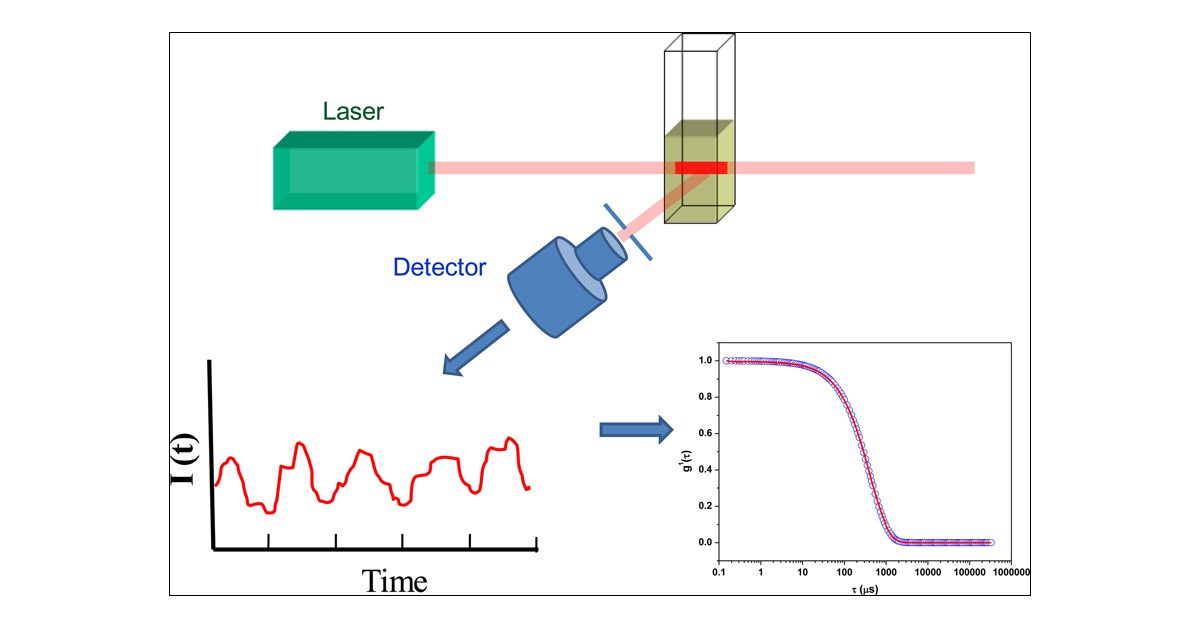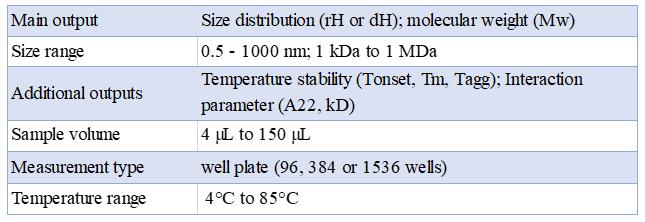Dynamic Light Scattering (DLS), also known as Photon Correlation Spectroscopy (PCS), is a well-established measurement technique based on Brownian motion and is a very powerful tool for studying the diffusion behavior of macromolecules in solution. DLS technology measures motion optically by recording scattered light signals at a fixed angle. The light scattered by the particles contains information about the diffusion speed and thus the size distribution. DLS is capable of analyzing particles in the size range from 0.3 nm to 10000 nm. Due to the weak signal and low angular variation of the scattered signal, laser diffraction usually reaches its limit for particles smaller than 100 nm, this is where the strength of dynamic light scattering lies.
DLS has been widely used to characterize nanoparticles, analyze highly concentrated and highly diluted samples, measure Zeta point and molecular weight, etc. Since its invention, numerous studies have provided evidence of the usefulness of DLS for the hydrodynamic behavior of proteins, nucleic acids, and viruses, as well as the homogeneity of protein-protein or protein-nucleic acid complexes, and protein-small molecule interactions.
 Figure 1. Basic setup of DLS measurement system (Hassan, P.A.; et al. 2014)
Figure 1. Basic setup of DLS measurement system (Hassan, P.A.; et al. 2014)
As a professional service provider, Profacgen introduced DynaPro® Plate Reader III, ZentriForce Pharma instruments and experienced technicians to establish a powerful DLS platform. Both dynamic light scattering and static light scattering measurements can be performed on this platform, allowing high-throughput analysis, small sample volumes (4 µL), and low-concentration sample measurements. Due to its high sensitivity, even small impurities caused by aggregation can be detected.
It is worth mentioning that we also offer temperature-controlled measurements, where the temperature is varied during the experiment to determine the aggregation temperature, or to monitor sample stability at a constant temperature. The well-plate-based design allows us to measure samples simultaneously rather than consecutively.
This technique provides strong support for protein, nucleic acid, and virus studies, using DLS to study the average size and size distribution of ternary complexes, providing information on the structure of protein globules in these particles. Profacgen offers DLS measurements for quality control, sample homogeneity, and the effect of physical and chemical treatment, aiming to provide a one-step protein degrader platform.

Profacgen has accumulated lots of experience in dynamic light scattering. Our professional technical team can provide customers with DLS service with the best accuracy, resolution, and sensitivity. Our competitive prices and extensive expertise have earned us the trust of our collaborators. Contact us to find out how Profacgen could be of assistance.
References
Fill out this form and one of our experts will respond to you within one business day.